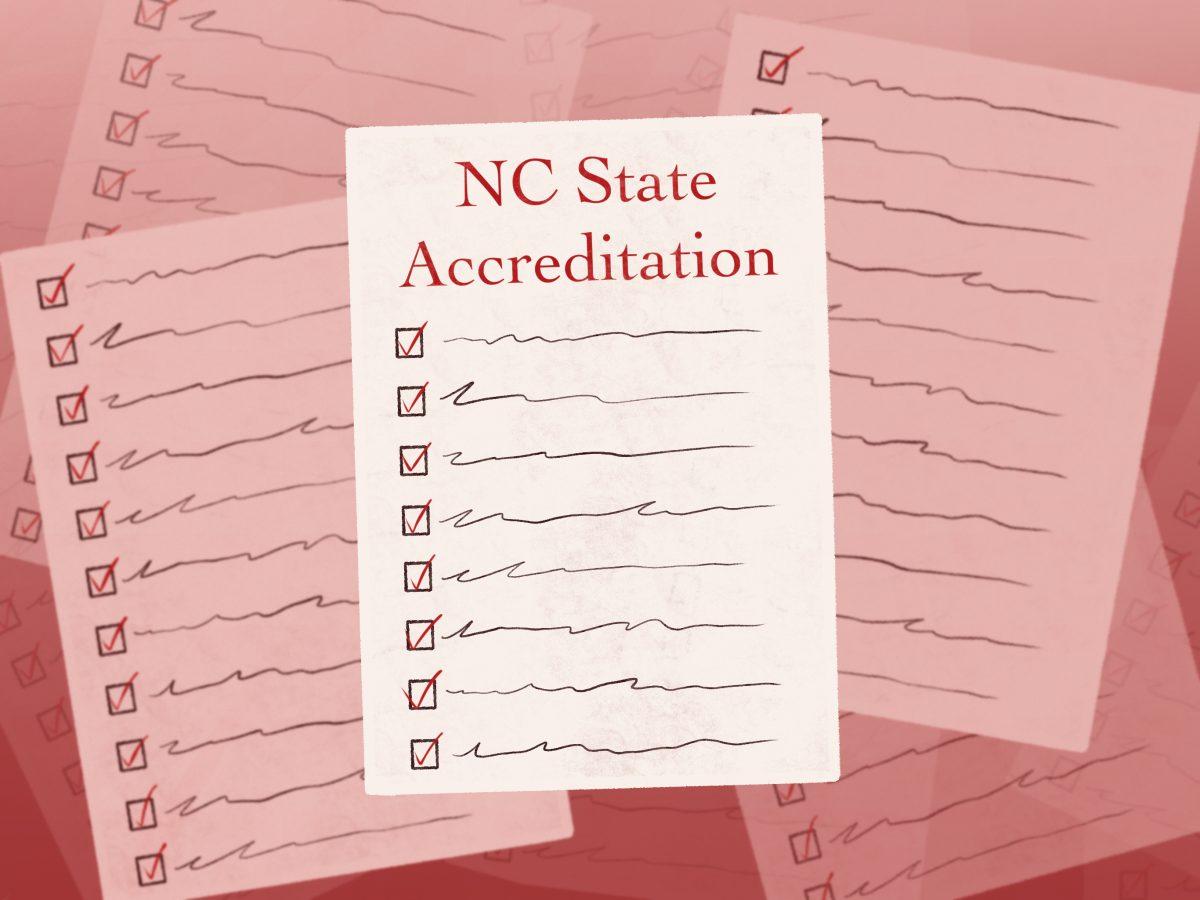With the arrival of 2024 comes the culmination of ten years of preparation to ensure NC State’s educational experience is as beneficial as possible to students.
Accreditation is a process a school goes through to determine its quality of education. Schools must go through this process every ten years to maintain accreditation.
Fashaad Crawford, the vice provost for assessment and accreditation at NC State, said accreditation ensures students receive a high-quality education and have access to federal financial aid.
“In order to receive financial aid, we have to be in good standing with our accreditor,” Crawford said. “When a student graduates, your transcript denotes that this is a [Southern Association of Colleges and Schools Commission on Colleges]-accredited institution. For employers, that tells them that you are graduating from an institution that has met certain quality standards for higher education.”
Kaitlyn Mittan, director of assessment and accreditation at NC State, said this process requires work from faculty across campus.
“We have a committee of folks, faculty, directors of undergraduate programs, department heads who work on an annual assessment process of student learning outcomes across campus,” Mittan said.
Christin Phelps, a senior lecturer for professional writing, said different accreditation boards have different ways of operating. NC State’s accreditation is overseen by the Southern Association of Colleges and Schools Commission on Colleges.
“There’s different accreditation boards throughout the country,” Phelps said. “And so there’s different requirements throughout the country as to what’s required for a university to retain its accreditation.”
Phelps said one such requirement is the inclusion of GEPs.
“That’s why if you look at any college in North Carolina, there’s always some form of a general education curriculum,” Phelps said.
These requirements can also shift depending on the college. For example, the Accreditation Board for Engineering and Technology is in charge of specifically accrediting universities’ engineering programs.
Phelps said requirements can be extensive.
“There are things that different organizations like [SACSCOC] are looking for when they’re doing re-accreditation,” Phelps said. “So to make sure that you’re offering the right courses to make sure that all of your faculty aren’t temporary faculty, you have permanent faculty on staff, that a certain percentage of your faculty are tenure or tenure track, that you are going to be able to financially sustain yourself for the next period of time, things like that.”
Jason Swarts, the English department head, said despite these requirements, accreditation requires looking at two specific aspects of education: objectives and teachers.
“They are looking at, among other things, educational objectives that different programs have and the evidence that they send in that they are meeting their educational objectives,” Swarts said. “The other thing that they’re doing is looking at who’s teaching classes in those majors and making sure that it’s clear to the outside reviewers that we are hiring qualified teachers.”
“Qualified” faculty have credentials approved by SACSCOC. These credentials are not always academic. Previous work experience also counts as appropriate credentials.
Crawford said accreditation reaches beyond faculty.
“It really spans the entire university,” Crawford said. “So evaluating if there are adequate support services for students, student and academic support services, including interviews with students, for example, when they come on campus, for their evaluations. So it’s really a comprehensive overview of the quality of higher education being offered by an institution.”
NC State’s Office of Assessment and Accreditation oversees the school’s accreditation process.
The Office of Assessment and Accreditation is responsible for gathering data required by SACSCOC to present to accreditation reviewers in March. Each department is responsible for collecting and sending its data to the Office of Assessment and Accreditation.
Alongside the 10-year accreditation, SACSCOC requires a midpoint check-in every five years, and each department has its own individual accreditation every eight years.
Crawford said there are over 70 standards for accreditation. If a university doesn’t meet the requirements of the accreditation board, then SACSCOC places them on warning or probation. For some schools, this can result in an inability to support their students sufficiently.
Phelps said that while accreditation boards’ standards are strict to ensure education quality and warnings and probations are valid, it’s important to look into why an institution fails accreditation.
“Just because a school is on warning doesn’t mean that there’s necessarily an issue that should be concerning and that should cause you to not apply,” Phelps said. “But looking at why it’s on warning. … If it’s because they’ve failed to submit a single document out of a stack that somebody forgot, that’s not a reason why you wouldn’t apply to go there.”
Swarts said the University can evaluate its own progress through accreditation.
“On one hand, it’s a chance for reflection,” Swarts said. “And on the other hand, it’s a way of us being real with ourselves and making sure that we’re actually doing what we say we’re doing.”
Phelps said the importance of accreditation isn’t only ensuring quality but also ensuring student care.
“Accreditation is important because … it will reassure you that the education you’re getting is valued and worthwhile and that the school has the resources to support you as a student,” Phelps said.













